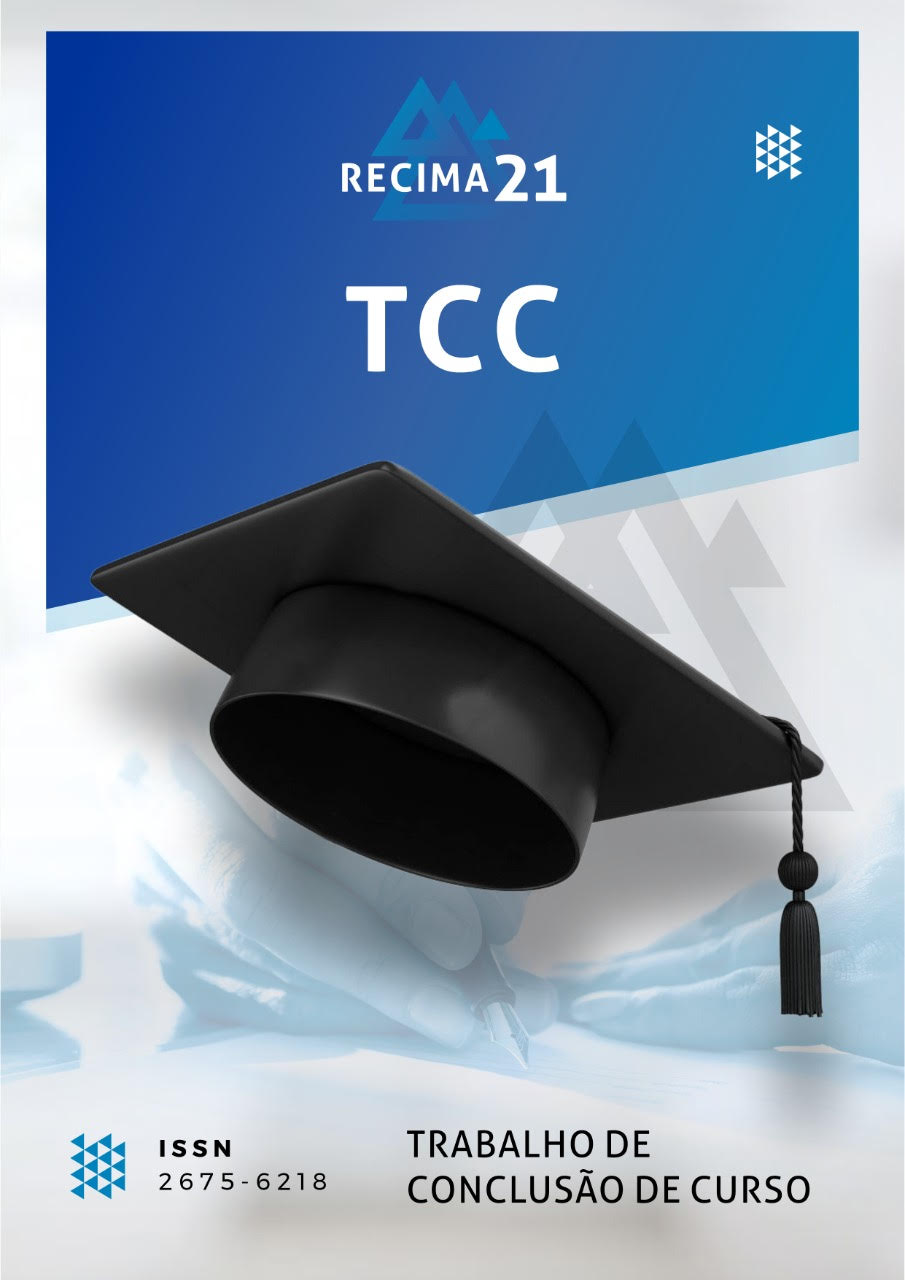A ATUAÇÃO DA FISIOTERAPIA NO TRATAMENTO DO PÉ TORTO CONGÊNITO PELO MÉTODO PONSETI
DOI:
https://doi.org/10.47820/recima21.v4i1.3213Palavras-chave:
Pé torto congênito; Tratamento; Método PonsetiResumo
Introdução: Pé torto congênito é uma deformidade ortopédica nos membros inferiores ocasionada pelo alinhamento do pé e do comprometimento da flexibilidade. O método mais utilizado atualmente é o de Ponseti, que consiste em manobras e imobilizações por meio de confecções de gessos. Objetivo: Analisar a eficácia da atuação fisioterapêutica pelo Método Ponseti no tratamento do PTC. Método: Trata-se de uma revisão sistemática, na qual para a coleta de dados utilizou as bases eletrônicas SCIELO, PubMed, MEDLINE, PEDro e Lilacs. Foram analisados artigos publicados entre o período de 2018 a 2023. O instrumento de seleção utilizado foi o Método PICO e o Método de construção do fluxograma aplicado foi o Método PRISMA. Os descritores: Pé torto congênito; Tratamento; Método Ponseti foram combinados com o operador booleano (AND). Resultados: Após as seleções dos estudos, foram analisados 10 artigos que confirmam que o Método Ponseti é o mais eficiente no tratamento de PTC, e suas técnicas são coincidentes com as utilizadas por fisioterapeutas, sendo cabíveis sua praticabilidade por este profissional. Conclusão: O Método de Ponseti tem apresentado resultados positivos e um baixo índice de retorno a deformidade do PTC, evitando procedimentos cirúrgicos que podem levar a complicações. Comparado com o Método de Kite no tratamento do PTC, o Método Ponseti obteve melhores resultados na taxa de correção da deformidade, na taxa de recorrência e na necessidade cirúrgica. Em relação à atuação do fisioterapeuta nessa área, observou-se uma escassa divulgação em periódicos científicos de estudos nessa temática.
Downloads
Referências
Dias H. síndrome do pé torto congênito: uma revisão sistemática (Congenital clubfoot syndrome: a systematic review). Revista Brazilian Journal of Development. 2022. Disponível em: https://brazilianjournals.com/ojs/index.php/brjd/article/view/48106/pdf.
Chueire AJFG, Carvalho Filho G, Kobayashi OY, Carrenho L. Treatment of congenital clubfoot using Ponseti method. Revista Brasileira de Ortopedia (English Edition). 2016. Disponível em: https://www.scielo.br/j/rbort/a/ys6n8lbjbzzgklbxhsczhyn/?format=pdf&lang=en.
Carvalho MD, Batista J. Pé torto congênito (Congenital Clubfoot). 2011 Disponível em: https://www.scielo.br/j/aob/a/wvjrrdz7zfrxpwwkpjfk8mr/?format=pdf&lang=pt.
Santos AN, Silva BMH, Vieira DFA, Fidelis de PGC, Barboza SR, Silva SC. Método Ponseti como forma de tratamento de pé torto congênito em um município Brasileiro. Brazilian Journal of development 2021. Disponível em: https://brazilianjournals.com/ojs/index.php/brjd/article/view/24346/19450
Motta IS, Amorim PB. A atuação da fisioterapia no tratamento do pé torto congênito: Estudo de caso. Recima21 - Revista Científica Multidisciplinar - ISSN 2675-6218. 2021 Disponível em: https://www.recima21.com.br/index.php/recima21/article/view/870/739.
Nunes SV. Importância da idade da criança para se iniciar o tratamento do pé torto congênito pela técnica acelerada de Ponseti. 2020. Disponível em:
https://repositorio.ufmg.br/bitstream/1843/38563/1/tese%20doutorado%20sabrina%20versuti%20nunes.pdf.
Bitew A, Melesse DY, Admass BA. A 5 years results of the Ponseti method in the treatment of congenital clubfoot: a retrospective study. European Journal of Orthopaedic Surgery & Traumatology 2022. Disponível em: https://link.springer.com/article/10.1007/s00590-022-03353-5.
Gaytán-fernández S, Et al. Seguimiento por cuatro años de pacientes con pie equinovaro aducto congénito manejados con método Ponseti Four years follow up in congenital talipes equino varus patients managed with Ponseti method. Acta Ortopédica Mexicana 2021. Disponível em: https://www.medigraphic.com/pdfs/ortope/or-2021/or212n.pdf.
Lasebikan OA, Et al. Ponseti clubfoot management method: Initial experience with 273 clubfeet treated in a clubfoot clinic of a Nigerian regional orthopedic hospital. Nigerian Journal of Clinical Practice · September 2019. Disponível em: https://pubmed.ncbi.nlm.nih.gov/31489864/.
Yaqeen A, Sidra H, Ijaz MA, Ijaz MM. Comparison of outcome of Ponseti method with traditional clubfoot treatment in children up to five years of age at tertiary care hospital. Pakistan Journal of Medical Siences 2022. Disponível em: https://www.pjms.org.pk/index.php/pjms/article/view/5519.
Vahidi K, Et al. Clinical, Radiological, Pedobarographic, and Quality of Life Outcomes of the Ponseti Treatment for Clubfoot: A prospective Study from Iran. Sciencedirect Journals e Books 2022. Disponível em: https://www.sciencedirect.com/science/article/abs/pii/s0958259222000189?via%3dihub.
Haje DP, Et al. Ponseti Method After Walking Age – A Multi-Centric Study of 429 Feet: Results, Possible Treatment Modifications and Outcomes According to Age Groups.iowa Orthopaedic Journal 2020. Disponível em: https://www.ncbi.nlm.nih.gov/pmc/articles/pmc7894059/.
Ferreira GF, Stéfani KC, Haje DP, Nogueira MP. The Ponseti method in children with clubfoot after walking age – Systematic review and metanalysis of observational studies. Journal PLOS ONE 2018. Disponível em: https://doi.org/10.1371/journal.pone.0207153.
Chunho Chen, Et al. Comparison of two methods for idiopathic clubfoot treatment: A case-controlled study in Taiwan. Journal of the Formosan Medical Association 2019. Disponível em: https://www.sciencedirect.com/science/article/pii/s0929664618300573?via%3dihub.
Garcia LC, Et al. Evaluation of Kite and Ponseti methods in the treatment of idiopathic congenital clubfoot avaliação dos métodos de Kite e de Ponseti no tratamento do pé torto congênito idiopático. Revista Acta Ortopédia Brasileira 2018. Disponível em: https://www.scielo.br/j/aob/a/dsrwlwjxrrsgcdhfppfcpkm/?lang=en.
Fincato FC. Pé torto congênito: Método de Ponseti e sua aplicabilidade pelo fisioterapeuta / Congenital clubfoot: Ponseti method and its applicability by the physiotherapist. Fisioter Bras 2020. Disponível em: https://pesquisa.bvsalud.org/portal/resource/pt/biblio-1282978.
Downloads
Publicado
Edição
Seção
Categorias
Licença
Copyright (c) 2023 RECIMA21 - Revista Científica Multidisciplinar - ISSN 2675-6218

Este trabalho está licenciado sob uma licença Creative Commons Attribution 4.0 International License.
Os direitos autorais dos artigos/resenhas/TCCs publicados pertecem à revista RECIMA21, e seguem o padrão Creative Commons (CC BY 4.0), permitindo a cópia ou reprodução, desde que cite a fonte e respeite os direitos dos autores e contenham menção aos mesmos nos créditos. Toda e qualquer obra publicada na revista, seu conteúdo é de responsabilidade dos autores, cabendo a RECIMA21 apenas ser o veículo de divulgação, seguindo os padrões nacionais e internacionais de publicação.













